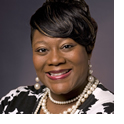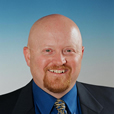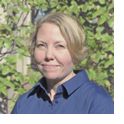
A Note from Ujima Donalson,
POD Director
As leaders, we’re always looking for the next big thing—an innovative approach, an exciting new idea, a fresh take on a time-worn theory—anything that may help us be better at what we do. One trend that’s been building for several years now is neuroscience, a field which continues to expand, mingle with a growing number of disciplines, and produce a barrage of self-help books.
As Chuck Pratt writes in the feature article for this issue, “Cognitive psychology is a gold mine for the leader willing to invest some time in digging a little for the tools to help them.” I hope you are able to make time this summer to do some digging in whatever leadership development mine is of interest to you. Read more
"Start thinking about your thinking." ~ David Rock

Leadership, Psychology, Neuroscience, and SCARF
Do You Have All the Tools You Need to Deal With the Demands of Leadership?
by Chuck Pratt, President, Charles Pratt Consulting, Inc.
In this article I’d like to influence you regarding the value that leaders gain from paying attention to human psychology and neuroscience, including introducing you to useful concepts like cognitive complexity and psychological mindedness, as well as psychological threats and people’s surprisingly strong reactions to them. I would also like to offer a fundamental and profound model that can serve as a powerful cognitive tool to increase your success in human interaction.
Are We In Over Our Heads?
Harvard professor and developmental psychologist Robert Kegan proposes that the ever-increasing complexity of our world is exceeding our capacity to figure it out (hence the title of his book, In Over Our Heads). Read more
"When you prohibit failure, you kill innovation." ~ Dan Pallotta (TED2013)

Conflict Happens
by Kim Delaney, Consultation Services Coordinator
In my work for the University Consulting Alliance, I get calls from managers across campus, seeking help in hushed tones for problems they’re sure no one else has. Two employees who share a workspace but refuse to speak to each other. A team member who skips any meeting that a certain someone is scheduled to attend. A lead whose hot-blooded emails have created an environment of distrust.
Most callers are embarrassed by the situation in question and express concern about not wanting to get anyone in trouble. Many are certain that their fellow leaders oversee teams who work in a state of perpetual bliss, singing “Kumbaya” together at the end of each day. If such leaders and teams did exist, I probably wouldn’t hear from them, but the truth is most of us regularly experience conflict or discord in the workplace. It’s the perennial elephant in the office that everyone’s desperate to ignore. Read more
"Doing emotional due diligence is just as important as doing financial due diligence. It is actually people that make money and lose money, not Excel spreadsheets." ~ Halla Tomasdottir (TEDWomen)

Ask an Expert: Increasing Focus
by Pierre Khawand, Founder and Principal, People-OnTheGo
Q. How can my team members and I become more focused and less distracted?
Increasing focus and decreasing distractions are two sides of a very elusive coin. Due to email, the Internet, smart phones, and other products of the digital revolution, our lives have become a series of frequent interruptions intermingled with small flurries of work.
Our efforts are like waves pounding on a shore. Sometimes we get lucky and the tide comes in, but typically we move forward, then backward, and then forward again. For our efforts to amount to something substantial, we need focused work sessions—periods of sustained, uninterrupted activity. I know that kind of time can be hard to come by, but the truth is you can create an environment of focus, fulfillment, and accomplishment in three steps: eliminate external distractions, plan for productivity, and capture the Killer Bs (our internal interrupters). Read more
"I came to believe that a leader isn't good because they're right; they're good because they're willing to learn and to trust ." ~ Stanley McChrystal (TED2011)

Leadership by the Book
To Be[lieve] or Not to Be[lieve]...in Neuroscientific Leadership
When staff participation in a meeting is needed, blank stares around the table are unacceptable. In order for staff members to understand their ideas are vital, a leader must use a method relative to empathy, and that method involves neuroscience. Srinivasan S. Pillay’s Your Brain and Business: The Neuroscience of Great Leaders explores how increasing your understanding of how your employees’ brains work can aid in various leadership tasks and organizational pursuits.
Your Brain and Business discusses the neuroscientific leadership style as a process of letting employees know that you can share (as opposed to impose or demand) their emotions and build a fundamental business relationship based around trust. Read more
|







